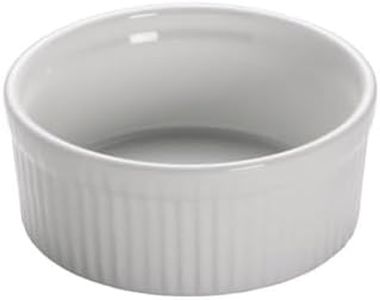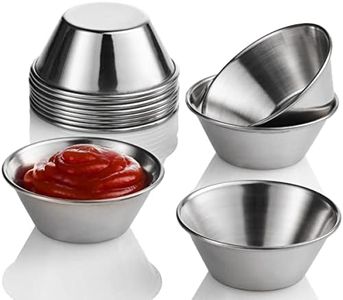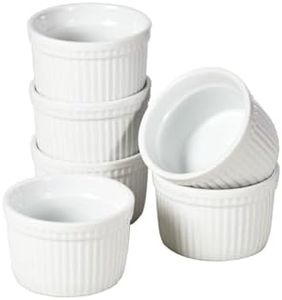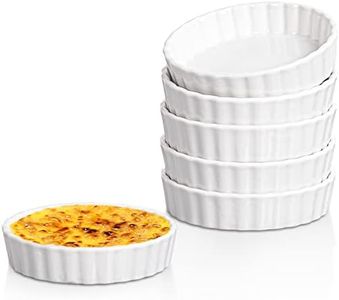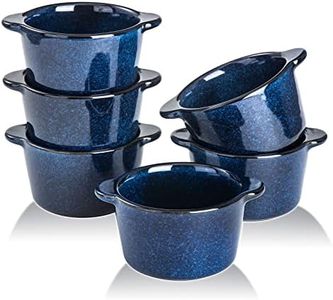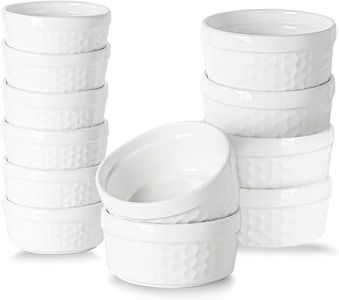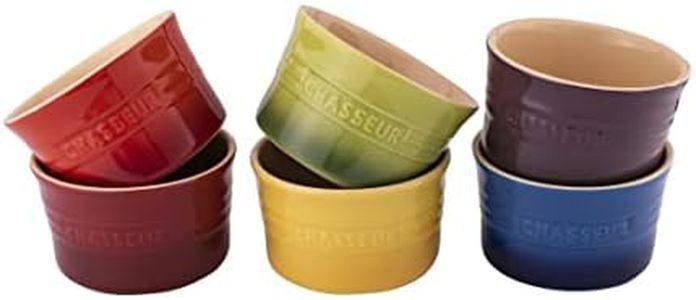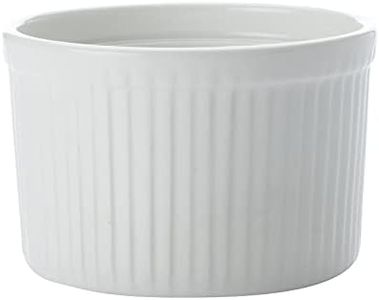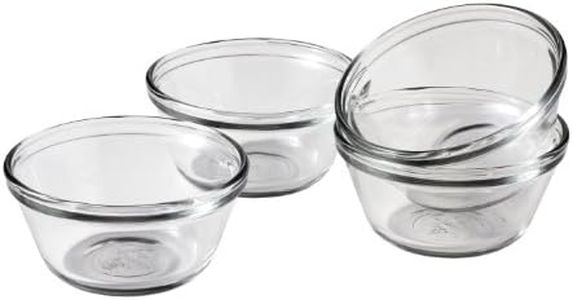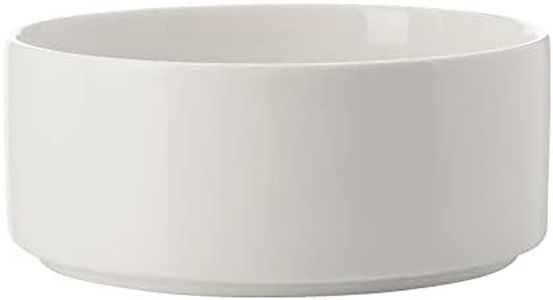We Use CookiesWe use cookies to enhance the security, performance,
functionality and for analytical and promotional activities. By continuing to browse this site you
are agreeing to our privacy policy
10 Best ramekins
From leading brands and best sellers available on the web.Buying Guide for the Best ramekins
Ramekins are small dishes often used for baking individual portions of food, such as soufflés, crème brûlée, or even for serving dips and snacks. Choosing the right ramekin might seem simple, but a few features can make a big difference in how you cook and present your food. By understanding some main characteristics, you can pick a ramekin that matches your cooking style, portion needs, and preferences.MaterialRamekins are typically made from ceramic, porcelain, glass, or sometimes stainless steel. This spec refers to what the ramekin is actually made of, and it matters because material affects how heat is distributed and retained, as well as how easy it is to clean. Ceramic and porcelain are the most common for baking—they’re sturdy, hold heat well, and generally oven- and dishwasher-safe. Glass is great for seeing through the sides, but can be more fragile. Stainless steel is durable and less likely to break, but isn’t common for baking. Consider what you’ll mostly use it for: frequent bakers might prefer ceramic or porcelain, while for serving cold snacks, glass or stainless steel might do.
Capacity/SizeThe capacity refers to how much the ramekin can hold, often measured in ounces or milliliters. This is important because different recipes require different portion sizes. Small sizes (2-4 ounces) are great for small desserts like soufflés or holding dips, while medium (5-8 ounces) suit puddings and small casseroles, and larger ones (9 ounces and up) are for au gratin dishes or mini pot pies. Think about what you like to prepare most often. If you mainly serve dessert, smaller ramekins work; for heartier starters or sides, go a size up.
Shape and DepthRamekins typically come in round shapes but can also be found in oval, square, or novelty shapes. Shape matters mostly for presentation and how evenly your food bakes or cooks. Deeper ramekins are better for soufflés where rise is important, while shallower ones are better for dishes where a crispy top layer is wanted, like crème brûlée. If appearance is important, pick shapes that match your tableware. If focusing on cooking performance, stick with traditional round and choose depth based on your favorite dishes.
Rim and SidesThe rim and sides might seem minor, but they matter, particularly for recipes requiring rising, like soufflés. Ramekins with straight, high sides and a wider rim help soufflés climb and ‘puff up’ while baking, giving that classic look. For layered or served-cold dishes, straighter or even slightly flared sides work well for easy serving. Consider what’s more common for you: soufflés need those straight sides and a defined rim, while for custards or dips, any side shape works.
Oven and Microwave SafetyThis refers to whether the ramekin is approved for use in ovens, microwaves, or even freezers. It’s important because not every type of ramekin can withstand high temperatures or quick changes in temperature without cracking. Most ceramic and porcelain ramekins are safe for ovens and microwaves. If you want versatility—heating, baking, and freezing—check that the ramekin is labeled oven-, microwave-, and freezer-safe. This matters more if you like to reheat or chill foods directly in the dish.
Ease of CleaningSome ramekins are dishwasher-safe, while others require hand washing. Smooth, glazed surfaces are generally easier to clean because food doesn’t stick as much. If you cook sticky desserts or don’t enjoy hand washing, look for 'dishwasher-safe' and non-stick surfaces. If your ramekin has rough or unglazed spots, expect a bit more scrubbing after use.
